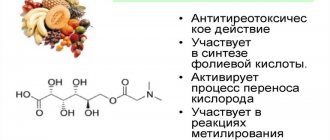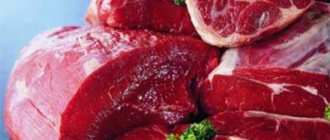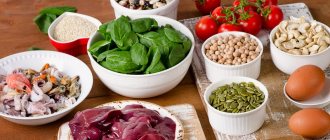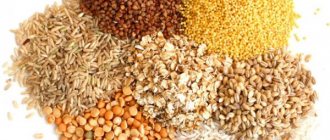Minus 24 kg without leaving home! A Muscovite who lost weight in quarantine “blew up” Russia with her recipe
Calcium (Ca) is one of the most important chemical elements for the human body. It is a building material of bone tissue and is considered an essential component of blood clotting.
Calcium is also indispensable in the functioning of the hormonal and muscular systems. A lack of this microelement in the body can lead to serious consequences.
Benefits of calcium for the body
Calcium (Ca) is a macronutrient that helps the human body function normally. Its benefits are as follows.
- It is very necessary for children, adolescents and pregnant women, as it strengthens teeth and bones and promotes the proper formation of bone tissue.
- It is necessary for hypertensive patients because it regulates the functioning of the heart muscle and lowers blood pressure.
- Ca nourishes the nervous system. If there is not enough of it, the central nervous system takes the necessary nutrients from the bones.
- Ca lowers blood cholesterol levels.
With a lack of calcium, the body takes it from bone tissue, which can lead to the development of osteoporosis (brittle bones). Other signs of macronutrient deficiency are increased irritability, metabolic disorders and electrical conductivity of myocardial cells, brittle nails, weak split ends, and bad teeth.
Useful tips and tricks
Eating foods containing calcium is especially beneficial for bones and teeth.
The macroelement is involved in cellular metabolic processes and is important for muscle activity and coordination of movements. Eliminates reduced blood clotting, has an anti-inflammatory effect, supports the nervous system. With an unbalanced diet or illness, the body is forced to extract calcium from bone tissue, including to meet the need for additional energy. This happens with calcium metabolism disorders, when the body is chronically dehydrated. Osteoporosis develops - bones become porous and susceptible to fracture.
The intake of foods rich in calcium increases the body's resistance to infections, temperature changes, reduces vascular permeability, and the likelihood of high blood pressure.
The macroelement cleans blood vessels and helps eliminate cholesterol plaques.
Calcareous deposits on the walls of blood vessels are often associated with excessive consumption of foods rich in calcium.
In reality, the disease is caused by the inorganic variety. Eating natural foods without heat treatment helps preserve and maintain health.
If you are diagnosed with Ca deficiency, try to lead an active lifestyle: athletes’ bodies better absorb calcium from food (the list of foods richest in Ca is given in the table).
Review your menu, eliminate excessive consumption of salty foods, sweets, strong coffee, and alcoholic beverages. Do not get carried away with visiting a bathhouse or sauna: Ca is also removed from the body with sweat.
Daily norm: what threatens a lack and excess of calcium
The mineral will be beneficial provided that a person consumes the daily requirement of Ca every day. For adults and for children, this indicator is different. The recommendations of the All-Russian Health Care Association are given in the table.
| Person's age (in years) | Ca intake rate (grams/day) |
| Up to 3 years | 0,6 |
| 4-9 | 0,8 |
| 10-13 | 1 |
| 14-24 | 1,2 |
| 25-55 | 1 |
| from 56 | 1,2 |
But these recommendations are based on the diet and lifestyle of Europeans and North Americans. Japanese, Indians, Turks and South Africans need to consume 3 to 3.5 grams of Ca daily. The daily intake recommended for Russians is slightly different.
| Person's age (in years) | Ca intake rate (grams/day) |
| From birth to six months | 0,4 |
| From 7 months to 1 year | 0,6 |
| 1-8 | 0,8 |
| 9-14 | 1,3 |
| 14-18 | 1,3 |
| 19-50 | 1 |
| from 56 | 1,5 |
Women during menopause, pregnant and lactating mothers require the most Ca (1.2-1.5 g). Note that during menstruation, the female body also loses a lot of calcium. In teenage girls, severe pain in the lower abdomen can signal a lack of microelement. During this period, girls and women need to consume 1.4 g of Ca daily.
What does a lack of calcium lead to?
If a child consumes little Ca, this will negatively affect his physical and neuropsychic development. Bone tissue becomes so fragile that over time the baby develops scoliosis, osteochondrosis, and the risk of numerous injuries and fractures increases.
In adults, a lack of Ca leads to disruption of the immune, cardiovascular system, and central nervous system. Vessels become weak, and blood clotting worsens; any wound can lead to serious blood loss.
What are the dangers of excess calcium?
You can understand that a person consumes more Ca than his body needs by the presence of certain symptoms: pale skin, many wrinkles (even at an early age), dry hair; thirst, loss of appetite, nausea and vomiting (for no apparent reason), flatulence, constipation; the appearance of stones in the bladder and kidneys; headache, apathy, drowsiness, brain dysfunction (confusion, hallucinations).
Excess Ca also does not lead to positive changes; rather, on the contrary, a person loses his life potential and ages faster. As paradoxical as it may sound, excess Ca can also cause bone fragility. At the same time, the blood becomes more viscous, which negatively affects the heart rate and the functioning of the heart valves.
Calcium products or tablets – which is better absorbed by the body?
You can replenish Ca reserves by including foods rich in this macronutrient in your daily diet. Contrary to popular belief, the “champions” in Ca content are not milk or cottage cheese. The most calcium is found in poppy seeds, Parmesan and sesame seeds.
You can get the required amount of the mineral by taking special medications created by pharmacists specifically for patients with hypocalcemia. Calcium tablets, according to manufacturers, can compensate for the lack of this macronutrient in the body. But not all of them really help. The reason is the peculiarities of Ca absorption.
Pharmacies sell calcium gluconate, carbonate, citrate and chelate. It is better to take chelated calcium. It is absorbed by 90-98%, and additional vitamin D3 is not required. Preparations based on calcium chelate are expensive, but the results are worth it.
Before choosing calcium tablets, you should consult your doctor.
And yet, the Ca that a person receives from food is best absorbed. Some products have more of it, others have less. You can adjust your diet, knowing exactly what will help replenish the amount of Ca in the body.
Eliminating shortages
Eggshells are 90% calcium carbonate. The body completely absorbs it and converts it into calcium phosphate, which strengthens bone tissue and teeth. The shell also contains phosphorus, copper, zinc, iron, and manganese.
Recipe 1:
- Wash the raw egg, boil the shell for 15-20 minutes, peel off the film. Dry and grind in a coffee grinder.
Use the shells of 3-5 eggs at a time. Afterwards take 1 tbsp. fish oil rich in vitamin D.
Recipe 2:
- Get powder from the shells of three eggs.
- Pour in the juice of one lemon.
- Place on the bottom shelf of the refrigerator until dissolved.
Take 1 tsp. twice a day. The acidic composition facilitates the absorption of the element in the intestines.
Instead of lemon juice, you can use cranberries or other sour berries. To improve the taste, add 1 tbsp. honey
Foods high in calcium
It is generally accepted that the main source of Ca is dairy products. And to replenish its reserves, you need to drink milk every day, eat cottage cheese and/or cheese. However, this opinion is only partly true. In fact, not all types of cheese are equally rich in Ca, and milk and cottage cheese contain significantly less of this macroelement than, for example, green plants. Let's take a closer look.
Dairy
The amount of Ca in 100 grams of legumes or hard cheeses is higher than, for example, in foods processed from milk and soft cheeses, but this does not detract from the importance of the latter for human health. Moreover, dairy products are very popular.
There are several reasons for this: they do not require preliminary heat treatment, like meat, for example. They do not need to be washed like greens and vegetables. Cottage cheese, kefir, fermented baked milk, and milk are sold in hermetically sealed packages. They are convenient to take with you on the road; you can eat (drink) at any time of the day, since they always improve digestion.
Fish and seafood
A large amount of Ca is found in fatty fish. The leader is the sardine. At the same time, it is useful to eat fish bones - which means that a person needs to regularly eat canned food, but not only from sardines: salmon and mackerel are also useful. A good source of Ca, Mg, vitamins D and K is seafood. Thanks to these vitamins, calcium is easily absorbed.
Legumes
Plants of the legume family are also recognized as a good source of protein, but not all of them are well absorbed by the body. Thus, white beans contain half the Ca content than red beans, but they are better absorbed. Green peas are also rich in this macronutrient.
The only negative is that not everyone will include legumes in their daily diet.
Vegetables and greens
If you are deficient in Ca, consider supplementing your daily menu with vegetables and herbs: cauliflower, carrots, spinach, dill, parsley. However, do not forget that some of them (carrots, beets, spinach) contain oxalic acid. It prevents calcium from being absorbed well. It is better to heat treat such products.
Nuts and seeds
The highest amounts of Ca are found in poppy seeds and sesame seeds. The daily norm of a macronutrient “fits” in 1 tbsp. l. sesame In addition, nuts and seeds are rich in Mg, which helps the body absorb Ca. Cashews and almonds are richer in Mg than other nuts.
Fruits and berries
Fruits and berries contain a small amount of macronutrients, but they contain substances that make Ca well absorbed. Apples, peaches, grapes, dried fruits, strawberries, gooseberries help.
Not all berries improve calcium absorption. So, daily consumption of strawberries can have the opposite effect: Ca will begin to “leave out”. Pregnant women should remember this not very beneficial property of strawberries.
Cereals
The Ca content in cereals is low. In production, they can be additionally enriched with this macronutrient. If we consider natural products, then oatmeal is the richest in calcium, pearl barley is the least rich.
Meat and meat products
Contrary to popular belief, meat and meat products are low in Ca. The reason is that this macroelement in animals and poultry is not found in muscle tissue, but in the blood. Different types of meat have different amounts of Ca: veal has more than pork.
Eggs
Just like meat, the Ca content in eggs is low. For example, 100 g of egg yolk contains only 136 mg of Ca, which is 14% of the daily value. There is much more of this macronutrient in eggshells. This is calcium carbonate (calcium carbonate), which is well absorbed by the body.
Syrup
Molasses, or blackstrap, can be a good source of Ca. It is a viscous mass of dark brown color. It is not used as a sugar substitute or as an independent food product, but if you include molasses in your diet, it will provide the body with half of the daily calcium requirement.
Signs of excess
Excessive intake increases the excitability of the nervous system, dehydrates connective tissue cells, and reduces their functionality.
An increased calcium content in the body provokes the development of urolithiasis, deposits of calcium and magnesium salts, and increases the concentration of uric acid salts (urates). Deposits in the joint area, increased concentration of salt in cartilage are the cause of the development of gout and impaired mobility.
When calcium levels increase, it is useful to drink distilled or “soft” water, which contains a minimum of macronutrients. It rinses and dissolves excess minerals. The course of hydrotherapy is two months.
Table with calcium content in foods
| The product's name | Amount of Ca per 100 g (mg) | % of daily value |
| Dairy products and cheeses | ||
| Whole milk | 120 | 12 |
| Powdered milk | 1000 | 100 |
| Kefir | 126 | 13 |
| Ryazhenka | 124 | 12 |
| Yogurt | 124 | 12 |
| Sour cream (fat content – 10%) | 80 | 8 |
| Parmesan cheese | 1184 | 118 |
| Cheese “Russian” (fat content – 50%) | 880 | 88 |
| Cheese "Roquefort" (fat content - 50%) | 740 | 74 |
| Processed cheese "Sausage" | 630 | 63 |
| Fish and seafood | ||
| Pink salmon (canned) | 185 | 19 |
| Sprats in oil (canned) | 300 | 30 |
| Caspian sprat | 60 | 6 |
| Baltic sprat | 50 | 5 |
| Shrimp | 70 | 7 |
| Oyster | 60 | 6 |
| Acne | 20 | 2 |
| Red caviar (grainy) | 90 | 9 |
| Black caviar (grainy) | 55 | 6 |
| Legumes | ||
| Green beans) | 65 | 7 |
| Beans (grain) | 150 | 15 |
| Peas (shelled) | 89 | 9 |
| Lentils (grain) | 83 | 8 |
| Vegetables and greens | ||
| White cabbage | 48 | 5 |
| Red cabbage | 53 | 5 |
| Sauerkraut | 48 | 5 |
| Leek | 87 | 9 |
| Celery (greens) | 72 | 7 |
| Dill (greens) | 223 | 22 |
| Spinach (greens) | 106 | 11 |
| Parsley (greens) | 245 | 25 |
| Nuts and seeds | ||
| Sesame | 1474 | 147 |
| Poppy | 1600 | 16 |
| Sunflower seeds | 367 | 37 |
| Hazelnut | 188 | 19 |
| Pistachios | 105 | 11 |
| Walnut | 89 | 9 |
| Peanut | 76 | 8 |
| Almond | 273 | 27 |
| Fruits and berries | ||
| Apricot | 28 | 3 |
| Grape | 30 | 3 |
| Orange | 34 | 3 |
| Persimmon | 127 | 13 |
| Cherry | 37 | 4 |
| Strawberries | 40 | 4 |
| Cereals | ||
| Oatmeal | 64 | 6 |
| Manna | 20 | 2 |
| Barley | 80 | 8 |
| Pearl barley | 38 | 4 |
| Meat and meat products | ||
| Rabbit meat | 20 | 2 |
| Chicken | 16 | 2 |
| Turkey meat | 12 | 1 |
| Beef | 5 | 0,5 |
| Veal | 26 | 2,6 |
| Pork | 5 | 0,5 |
| Chicken meat (broiler) | 14 | 1 |
| Eggs | ||
| Chicken (yolk, white) | 55 (136, 10) | 6 (14, 1) |
| Quail | 54 | 5 |
| Egg powder | 193 | 19 |










